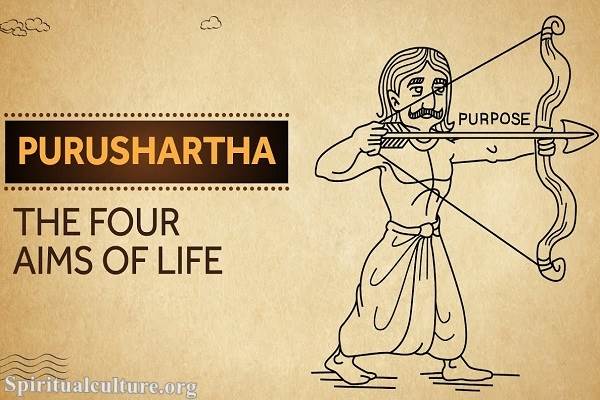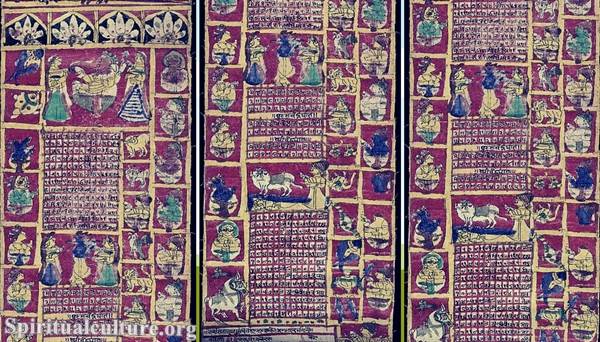In every tradition, the longing for guidance is universal. We yearn for someone who can light the path, clarify confusion, and lead us deeper into the mystery of life. In Hinduism, this sacred role is fulfilled by the Guru — not merely a teacher, but a luminous presence who awakens the soul. The guru is the remover of darkness (gu means darkness, ru means remover), a living embodiment of the divine who points not merely to knowledge, but to transformation.
This article, written as Spiritual Culture, explores the profound role of the guru in Hindu spiritual practice. We will trace the guru’s importance through sacred texts, traditional lineages, and real-life spiritual experiences. More than just honoring a figure, this is about understanding the sacred connection between guidance and inner awakening — and why, for many Hindus, the path to God is walked in the footsteps of the guru.
The Guru: A Sacred Archetype in Hinduism
Not Just a Teacher, But a Revealer
In the West, the word “guru” is often used casually, sometimes even humorously — to mean an expert. But in Hindu tradition, the guru is far more than a source of knowledge. The guru is a channel of grace, a spiritual midwife who helps birth the seeker into higher consciousness.
“The guru is Brahma, the guru is Vishnu, the guru is Shiva. The guru is the supreme Brahman itself. Salutations to that guru.”
— Guru Stotram, verse 9
This verse reveals the deep reverence given to the guru — not as a mere mortal, but as a manifestation of the divine trinity. The guru is not worshiped for their personality, but for their role as a mirror of the Self.
The Traditional Guru-Shishya Parampara
The guru-shishya parampara (teacher-disciple lineage) is a core part of Hindu spiritual life. This ancient model is relational, personal, and lifelong. It is not like a classroom; it is more like a sacred apprenticeship.
- The shishya (disciple) lives in humility, devotion, and receptivity.
- The guru imparts not only teachings, but presence — often through silence, ritual, and inner transmission.
This lineage-based transmission has preserved the depth of Hindu spiritual knowledge across millennia, from forest sages to modern ashrams.
Why a Guru Is Needed: The Inner Landscape Is Complex
The Mind Can Be a Labyrinth
Hindu philosophy teaches that the human mind is maya — a web of illusion, conditioning, and ego. While sacred texts are rich with knowledge, they are often cryptic without guidance.
“Even the wise are confounded in this world by what is action and what is inaction.”
— Bhagavad Gita 4:16
Without a guide, it’s easy to confuse spiritual effort with egoic striving, or detachment with indifference. The guru helps the disciple:
- Navigate ethical dilemmas (dharma)
- Discern true detachment (vairagya)
- Understand the deeper Self (atman)
The guru does not give all the answers — but helps the seeker ask better questions.
Awakening Can Be Intense
The deeper one goes into sadhana (spiritual practice), the more egoic structures collapse. This can be terrifying, destabilizing. The guru is a stabilizing force, both compassionate and uncompromising.
In this way, the guru is like a surgeon of the soul, cutting through illusion — but with love.
The Forms a Guru Can Take
Human Teacher: The Living Bridge
The most common form of the guru is a living teacher — someone who embodies realization and speaks from direct experience. These gurus:
- May come from recognized lineages (e.g., Advaita Vedanta, Bhakti, Tantra)
- Often give mantras, initiations, and direct teachings
- Sometimes appear ordinary — but their presence transforms
The Textual Guru: Shastra as Guide
In Hinduism, scriptures themselves can serve as guru when read with reverence:
- Bhagavad Gita (the dialogue between Krishna and Arjuna)
- Upanishads (philosophical texts exploring the Self)
- Yoga Sutras of Patanjali (guide to the path of yoga)
The seeker, however, is advised to read with humility and, ideally, under guidance — as the Sanskrit is layered with meaning.
The Inner Guru: The Self as Light
In the deepest sense, Hinduism teaches that the ultimate guru is within. Known as the antar-guru, this is the intuitive presence of the Divine that arises in meditation, silence, or moral clarity.
“You are your own friend, you are your own enemy.”
— Bhagavad Gita 6:5
The living guru, in this sense, points the disciple back to their own eternal Self — sat-chit-ananda (being-consciousness-bliss).
The Guru in Various Hindu Paths
In Bhakti Yoga: The Guru as the Beloved
For followers of Bhakti (the path of devotion), the guru is not just a teacher — but a beloved guide who opens the heart to divine love.
- Mirabai sang to her guru like a lover.
- Chaitanya Mahaprabhu wept for Krishna under his guru’s influence.
Here, the guru is a doorway to the Divine through love, not logic.
In Jnana Yoga: The Guru as the Torch of Knowledge
For Jnana yogis (path of knowledge), the guru imparts discriminative wisdom — the ability to discern the real from the unreal (viveka).
- Ramana Maharshi, though mostly silent, transmitted deep self-inquiry.
- Adi Shankara traveled India, engaging seekers in debates and awakening insight.
In this path, the guru challenges the disciple to go beyond intellect into realization.
In Tantra and Kundalini Paths
In Tantric lineages, the role of the guru is especially critical due to the intensity of the practices:
- Mantra initiation (diksha) must come from a realized guru.
- Kundalini awakening, if forced or unguided, can destabilize the practitioner.
Here, the guru is protector and guide, ensuring the seeker does not misuse spiritual power.
Signs of a True Guru: How to Discern the Real
In an age where “guru” is a marketing term, seekers often ask: How do I know who is a true guru?
According to the scriptures, a true guru is marked by:
- Self-realization — not just words, but embodiment.
- Humility and compassion — not manipulation or control.
- Freedom from material motives — no personal gain.
- Consistency with dharma — aligned with sacred teachings.
- Uplifting presence — brings clarity, not confusion.
“Approach the teacher with humility, inquiry, and service. The wise, who have seen the truth, will teach you.”
— Bhagavad Gita 4:34
True gurus liberate, not dominate. They direct seekers inward — toward the Divine, not toward themselves.
Stories of the Guru’s Grace
Throughout Hindu history, stories abound of lives transformed by a guru’s grace.
- Swami Vivekananda, a skeptical young man, became a fiery spiritual force after meeting Ramakrishna.
- Eknath, once a troubled youth, was transformed by Janardan Swami’s steady guidance.
- Neem Karoli Baba, with few words, radiated a divine love that changed Ram Dass forever.
These are not tales of blind devotion, but of awakening through relationship — a sacred companionship where the soul is mirrored and called forth.
Challenges and Pitfalls on the Guru Path
Misplaced Trust or Idealization
While the guru is sacred, Hinduism also warns against blind faith. Some seekers:
- Mistake charisma for realization.
- Cling to the outer form, ignoring the teaching.
- Project their unmet emotional needs onto the guru.
These pitfalls can lead to disillusionment. A wise seeker remains devoted, but discerning.
The Ego’s Resistance
A genuine guru often challenges the ego, and this can be uncomfortable. Many seekers, when faced with inner resistance, leave — only to return years later with new humility.
The path is not about obedience, but about transformation — which takes time, struggle, and deep trust.
The Ultimate Goal: Guru as Mirror of the Self
Ultimately, the guru does not create anything new in the seeker. Rather, the guru:
- Removes the veils
- Kindles the inner flame
- Points to the truth that was always there
“Tat tvam asi — That Thou Art.”
— Chandogya Upanishad 6.8.7
In the highest realization, the seeker sees that the guru, God, and Self are one. This is the non-dual vision (advaita), where love, devotion, and knowledge merge into a single light.
Reflect and Reimagine
The role of the guru in Hindu spiritual practice is not incidental — it is essential. In a tradition that honors inner experience, sacred texts, and timeless truth, the guru is the living bridge between the seeker and the Self.
Whether walking the path of love, knowledge, or energy, the guru is the one who whispers, “You are more than you believe. Come, see for yourself.”
To walk with a true guru is to walk a path of fire and grace — a journey from darkness to light, from separation to union.
Spiritual Culture invites you: If you seek truth, do not fear guidance. And when the time is right, the teacher will appear — not to lead you away from yourself, but toward your deepest, divine nature.




